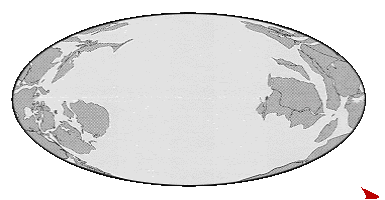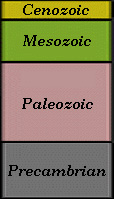
No definite answers to these questions will ever be found as nobody witnessed the first living systems organising themselves and gaining the ability to propagate. Nobody witnessed the evolution of cells and the specialisation into plant cells. Nevertheless can several sub-questions be answered by specific experiments and the analysis of living organisms. Namely, it is possible to predict highly possible consequences under certain conditions due to physico-chemical laws.
Before approaching the evolution of complex systems like cells, for example, it is necessary to understand the evolution of their partial sub-systems. Macromolecules are able to perform actions that are out of reach for smaller molecules. How, then, did macromolecules develop during the history of the earth, and how were valuable properties accumulated?
Physicists and geologists consider the earth to be 4.5 to 5 thousand million years old. All evolution of organisms has therefore to have been taken place during this time, unless it is assumed that the predecessors of living systems developed elsewhere in the universe before coming to the earth. This idea led to a lot of speculation, but not a single real proof for such an event exists.
During the Precambrian and after cooling down and forming a solid earth crust, the earth was surrounded by a reduced atmosphere consisting mainly of ammonia, methane, hydrogen, steam, and later most likely also of carbon dioxide, carbon monoxide, and nitrogen. Gases like hydrogen sulphide and nitrogen oxides may have been present in trace amounts. It is assumed that the originally very high percentage of hydrogen was soon reduced as a consequence of volatilization into the universe.
 |
 |
Continental Drift: Development of the earth crust during the earth history.
The numbers (in million years) correspond to the time axis. The primary continent is the Pangaea
compiled from reconstructions by :
Christopher R. SCOTESE -
PALEOMAP Project
U. Texas at Arlington
© University of California - Museum of Paleontology,
No ozone layer was yet existing and as a result, the UV-radiation must have been very high. A further cooling down led to the condensation of steam and thus to the first stretches of water. It could be that these were the conditions under which the first small organic molecules like alcohols, organic acids, etc originated.
The question can be tested experimentally. Simulation experiments were performed during the 1950th in the lab of H. C. UREY (University of Chicago). The illustration at the beginning of this chapter shows an experimental set-up that was constructed by UREY’s collaborator S. L. MILLER.
It shows a closed reaction system that can be filled with the mentioned gases at different ratios and concentrations. Energy can be supplied by heating, electrical discharges, high pressure or ultraviolet radiation. After a reaction period of several days or weeks, MILLER was able to detect a number of organic molecules, among them formaldehyde, cyanide, carbodiimide, organic acids, amino acids, and many others. The spectrum of molecules changed depending on the experimental conditions.
Part of these molecules are themselves highly reactive. L.E. ORGEL (The Salk Institute of Biological Studies, La Jolla / San Diego) was able to show that under abiotic conditions and after exposure to UV radiation, cyanides condense to purines like adenine and guanine. Moreover, amino groups incorporated into carbon hydroxides (like organic acids), thus leading to numerous further amino acids.
Sugars, both hexoses and pentoses, result as a consequence of formaldehyde exposed to UV radiation. Long hydrocarbons arise from methane with electrical discharges or ionising radiation as sources of energy. The same conditions allow the addition of carbon dioxide, thus leading to long fatty acid chains.
These and similar simulations show, that in principle all small molecules that we know as parts of cells or starting compounds of metabolic pathways can develop under abiotic conditions. Do abiotic conditions therefore also cause the existence of macromolecules?
|
|